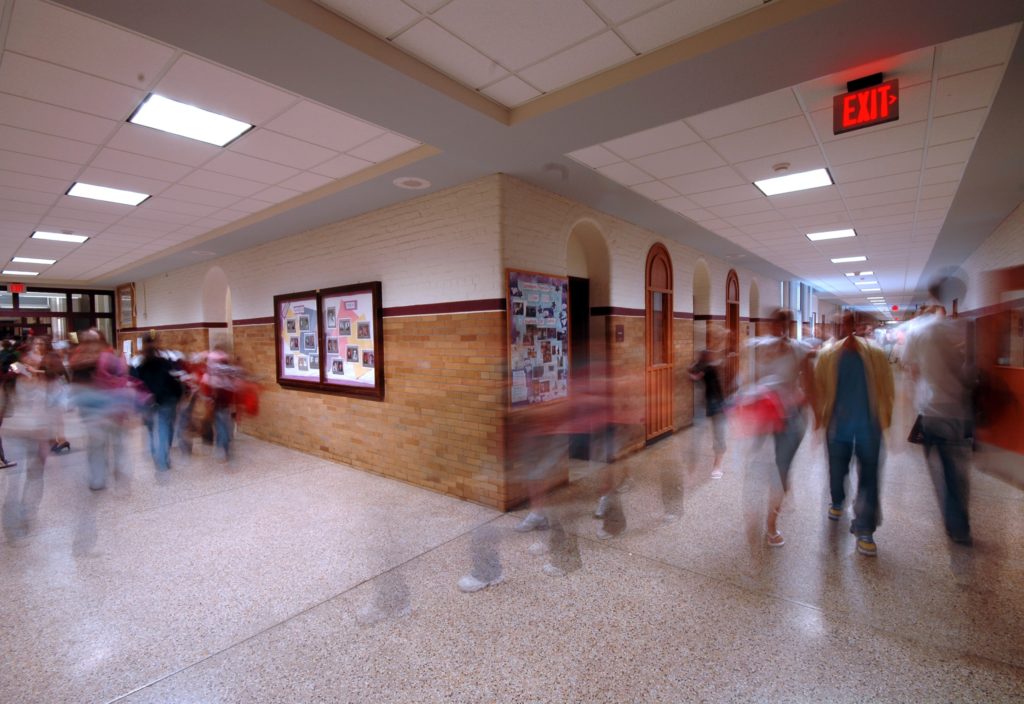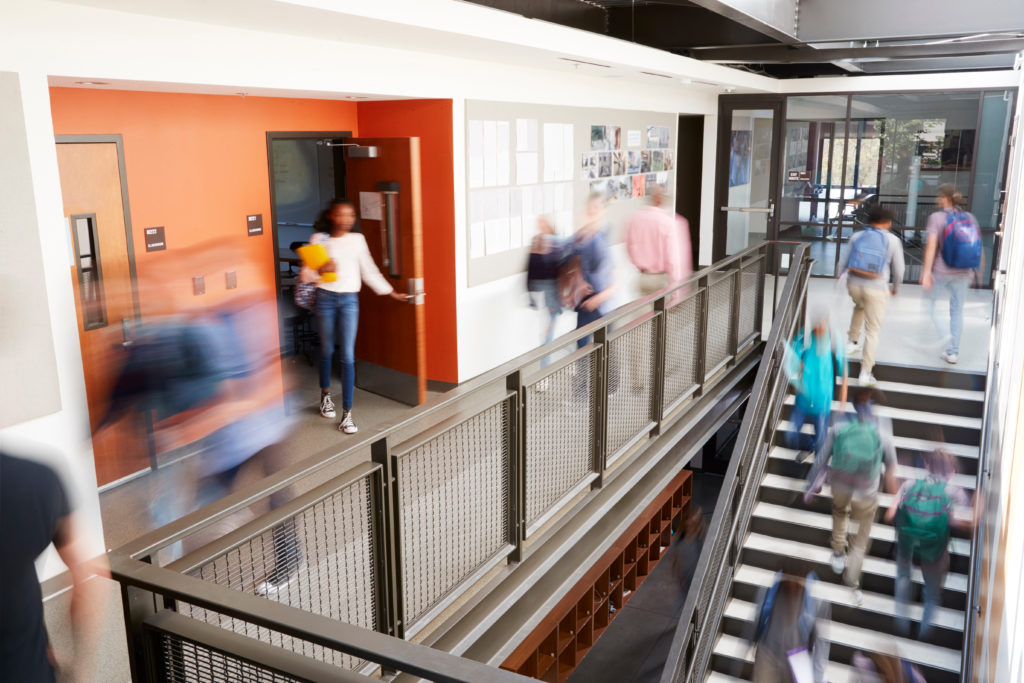
When you need to repair, refinish, or reseal your floors, you rarely ever have to do the whole thing at once. Floors don’t wear out evenly across an entire facility. Certain areas wear out more quickly than others because they experience more traffic than the rest of the building. This is especially true of school floors as they have unusually high traffic volumes at their main entrance lobbies and primary hallway intersections.
Let’s take a look at the traffic patterns school floors typically see and what that means for maintenance.
The 80/20 Rule
This is a rule of thumb used in the flooring industry to describe where most of the foot traffic in a school occurs. Typically, about 80% of a school’s foot traffic happens on about 20% of its flooring areas. More frequent maintenance is required to keep these primary traffic floor areas looking good.
Security concerns are a driving factor in the distribution of foot traffic on school floors. To keep students safe, nearly all of a school’s traffic passes through its main entrance security checkpoints. It follows then that the floor surfaces near the school’s main entrance areas, which typically represent about 20% of the overall campus, will require a high level of maintenance. We call this 20% of the floor area Level 1. Over time, Level 1 floor areas may be prone to wear faster than the less trafficked floors in Level 2 or Level 3 areas. Therefore, school floors in Level 1 areas tend to receive about 80% of the focus when planning ongoing maintenance programs.
Strategic Maintenance
Because school buildings have those very high-traffic Level 1 areas, they may require maintenance that Level 2 and Level 3 areas may never need. With flooring like Rikett Quartz Tile (RQT), a coating of polyurethane is often all you need to protect your floor’s appearance for many years. To protect RQT, we use Rikettseal™, an enhanced, commercial-grade UV-cured polyurethane coating applied to the flooring at the factory. This eliminates the need for costly strip-and-recoat floor finishing programs
Depending on the size of the school and the amount of foot traffic it sees, your floors could need an additional coat of polyurethane every 5 to 7 years in Level 1 traffic areas. This can be true with many flooring products, like VCT, VET, and LVT installed in Level 1 areas. Level 2 traffic areas receive substantially less traffic, requiring a lower frequency of regular maintenance and may not require any new polyurethane. Level 3 areas with the least frequent traffic, such as classrooms, may never need anything more than routine cleaning.

Get Long-Lasting School Floors with RQT
Having resilient, long-lasting flooring is important for any school. RQT offers a cost-effective and low-maintenance option for quality school floors. At Rikett, we stand behind our products with our 20-year warranty. With regular maintenance, you can expect your floors to last much longer.




